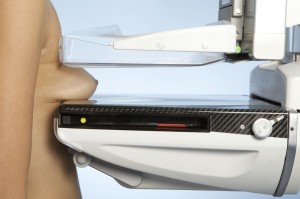 Jewell Plastic Surgery is proud to be a participant in the Dandelions Flowers Bras for a Cure. Bras for a Cure is such a creative way to bring mindfulness to Breast Cancer Awareness Month. This year the focus is on Breast Density. What does breast density have to do with mammograms? If I am told that I have dense breast tissue, do I need to worry?
Jewell Plastic Surgery is proud to be a participant in the Dandelions Flowers Bras for a Cure. Bras for a Cure is such a creative way to bring mindfulness to Breast Cancer Awareness Month. This year the focus is on Breast Density. What does breast density have to do with mammograms? If I am told that I have dense breast tissue, do I need to worry?
This year’s winner of the best cancer support category went to a young girl who lost her mom to breast cancer this summer. Her mom had dense breasts which made it very hard to find the cancer on the mammogram. Her mom lost her life; but not without a fight, for a new law passed in Oregon to notify women if you have dense breast.
 We know mammograms do save lives. Mammography has helped reduce breast cancer mortality in the U.S. by 33% since 1990. One in 6 breast cancers occur in women 40-49. Three in 4 women diagnosed with breast cancer have NO family history of breast cancer, and ARE NOT considered high risk. Current recommendations are for women over 40 to have annual mammograms and earlier if you have a strong family history of breast cancer. While these facts may or may not be surprising, there is still more to know about mammograms and their results.
We know mammograms do save lives. Mammography has helped reduce breast cancer mortality in the U.S. by 33% since 1990. One in 6 breast cancers occur in women 40-49. Three in 4 women diagnosed with breast cancer have NO family history of breast cancer, and ARE NOT considered high risk. Current recommendations are for women over 40 to have annual mammograms and earlier if you have a strong family history of breast cancer. While these facts may or may not be surprising, there is still more to know about mammograms and their results.
Forty percent of women have dense breast tissue. This means a mammogram shows predominantly glandular and fibrous tissue rather than fatty tissue. Dense breast tissue is common and is NOT abnormal, but having dense breast tissue can make it harder to see a developing cancer on a mammogram. Under the new Oregon Law that went into effect Jan 1, 2014, patients are to receive a notice if their mammograms have shown them to have dense breast tissue.
Patients with dense breast tissue should discuss options of supplemental breast cancer screening with their healthcare provider. These options may include ultrasound, MRI or breast specific gamma imaging. Under the Affordable Care Act, preventative screenings, including mammograms are covered and are not subject to co-pay or deductibles. Supplemental breast screenings may or may not be covered and patients should check with their individual insurance plans for details of coverage.
 The bottom line is that each woman needs an annual screening mammogram, a clinical breast exam by healthcare provider, and personal awareness of changes in her breasts by doing self-evaluations. By adhering to these basics women have the best defense against breast cancer.
The bottom line is that each woman needs an annual screening mammogram, a clinical breast exam by healthcare provider, and personal awareness of changes in her breasts by doing self-evaluations. By adhering to these basics women have the best defense against breast cancer.
Bras for a Cure raised more than $1500.00 for to the Oregon Cancer Foundation. All of the proceeds stay here in Lane County helping people in our community impacted by cancer helping them to better manage their journey.


Leave a Reply